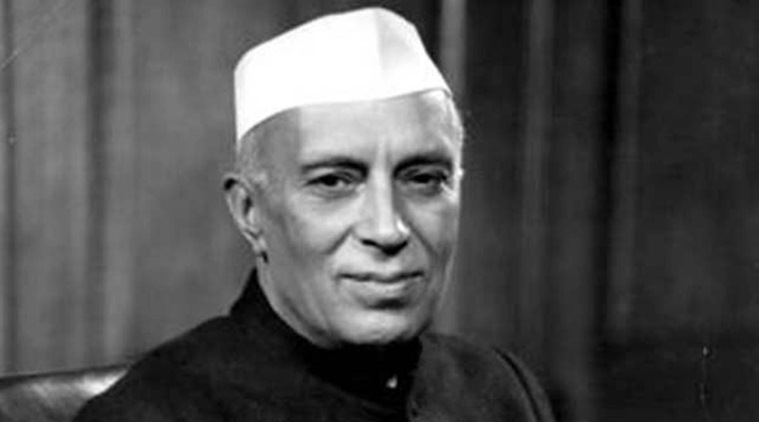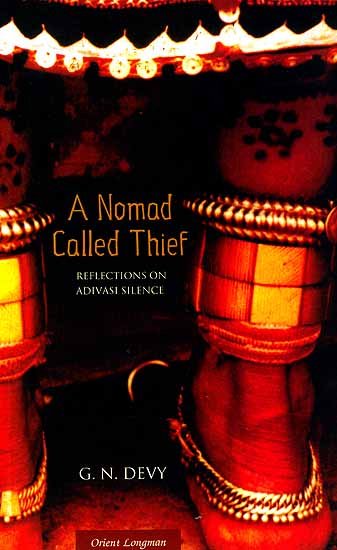
Photo © Indian Express
Ethnic Life-Worlds in North-East India: An Analysis by Prasenjit Biswas, Chandan Suklabaidy | Learn more here >>
Nehru is not only opposed to muting the tribal into submission but is also opposed to majoritarian Hindu chauvinism that aims at creating a homogenized national community. […]
For Nehru, the key is to preserve the variety of communities and cultures in the making of the nation. […]
His empathy for a people who sing and dance makes him to distinguish between tribes and the so-called civilized. This distinction presents a romantic imagination that constructs an alternative to the civilized, the national and cultural space where tribals live. The space inhabited by tribes, for Nehru, is not just spatially and temporally different, but it is a spur to an imagination beyond the so-called ‘civilization’. As he said, “The call of the jungle and mountains has always been strong with me, a dweller of the cities and of cities [sic] and of plains, though I am, and I gazed at these forests and jungles, fascinated” […]
About this book
Ethnic Life-worlds in North-East India: An Analysis draws upon the phenomenological notion of the life-world to understand the culturally-embedded construction of communities, for whom the lived experience of cultural politics constitutes their identity. It analyses the cultural and political determinants of ethnic- and identity-oriented struggles in India’s North-East, as well as the cultural politics of ethnic mobilizations in the region.
Such mobilizations are an attempt to construct a self-identity distinct from that constructed by the state—both colonial and post-colonial India—which becomes a source of concern for the latter with regard to its achieving legitimacy and development in the region. While both the state and insurgent groups carve out their distinct ideological and political agenda on to the life-world of the North-East, it is at the point of diversion that the struggle for establishing such agenda falls into the trappings of constitutional determinism. […]
Thought-provoking and analytical, this book opens a new window to the study of India’s North-East, which will intrigue students and scholars across various disciplines of development studies, sociology, philosophy, anthropology, political science and ethnic studies, and will be of interest to policy-makers, NGOs and global humanitarian communities.
Source: Ethnic Life-Worlds in North-East India: An Analysis by Prasenjit Biswas & Chandan Suklabaidya – Google Books (pp. 116-117)
Address : https://books.google.nl/books?id=auGGAwAAQBAJ&dq=Nehru+tribes+culture&source=gbs_navlinks_s
Date Visited: 18 January 2021
On 13th December 1946, Jawaharlal Nehru moved the Objectives Resolution in the Constituent Assembly of India. This proclaimed that the soon-to-be-free nation would be an ‘Independent Sovereign Republic’. Its Constitution would guarantee citizens ‘justice, social, economic and political; equality of status; of opportunity, and before the law; freedom of thought, expression, belief, faith, worship, vocation, association and action, subject to law and public morality.’ The resolution went on to say that ‘adequate safeguards shall be provided for minorities, backward and tribal areas, and depressed and other backward classes…’. In moving the resolution, Nehru invoked the spirit of Gandhi and the ‘great past of India’, as well as modern precedents such as the French, American, and Russian Revolutions. – Ramachandra Guha, “Unacknowledged Victims” | Learn more >>
Nehru was fascinated by the spontaneity of tribal culture and their capacity of joy and heroism inspite of their appalling poverty, destitution, and ignorance. | Read or download the full article in Odisha Review here >>
To him, the protection of tribals from exploiters, the safeguarding of tribals’ age old customs and free and enchanting in their societies and culture and bring them in to the mainstream of development process were important tasks. Nehru always tried to introduce development plans with a careful handling of challenges come across the tribal life and culture in a thinking that tribes had as much right to their own culture and religion as anyone else in India. In Nehru’s view, the process of modernization must not be taken as forcing a sudden break with the tribals past but help them build upon it and grow by a natural process of evolution. This did not imply preserving everything of the past. As Nehru wrote in An Autobiography, ‘We cannot stop the river of change or cut ourselves adrift from it and psychologically, we who have eaten the apple of Eden cannot forget the taste and back to primitiveness’. […]
Nehru built up a relationship with tribals based on sympathy, affection and sincerity. He addressed to a gathering on Bastar district of Madhya Pradesh in 1955 and declared “you should live in your own way. This is what I want you to decide yourselves …your old customs and habits are good. We want that they should survive but at the same time we want that you should be educated and should do your part in the welfare of our country.”
Undertaking of mining projects and the setting-up of large-scale industrial units like steel plants, aluminium companies in the tribal belts in Odisha, Bengal, Bihar and Madhya Pradesh led to large scale displacement of tribal population. The monetary compensation did not always help them.
According to a survey:- “with cash in hand and many attraction in the nearby industrial towns, tribal funds were rapidly depleted and in the course of time they were without money as well as without land.” So they were left at the mercy of the new economic system and easily became victim of exploitation. […]
Source: “Tribal Philosophy and Pandit Nehru” by Dr. Chittaranjan Mishra in: Odisha Review (November 2017)
URL: https://magazines.odisha.gov.in/Orissareview/2017/November/engpdf/100-110.pdf
Date visited: 30 October 2019
[Bold typeface added above for emphasis]
“The process of homogenisation and assimilation has neglected the differences in the identity of various tribes [and] the structures thus imposed to understand tribal identities marginalise a large section of the populace that do not fit in the identity matrix. [T]he approach to understand ‘tribe/tribal’ within the social structure of Hinduism is doomed to fail because the religion is itself a conglomeration of various schools of thought, often contradictory to each other.” – Pradyumna Bag in “Denial of Differences: Examining the Marginalisation of Tribal Cultures and Languages” >>
“Religion is a personal matter and should not be politicised.” – Invitation by the Bharat Jodo Abhiyan (BJA) – a civil society platform involving organisations from across 15 states – extended to all like-minded citizens “who take pride in our progressive, inclusive civilization and are committed to our constitutional values of fraternity, liberty, equality and justice” | TheWire (2 January 2024) >>
See also
Adverse inclusion | Casteism | Rural poverty
Demographic Status of Scheduled Tribe Population of India (Census figures 2011)
Fact checking | Figures, census and other statistics
Human Rights Commission (posts) | www.nhrc.nic.in (Government of India)
Search tips | Names of tribal communities, regions and states of India
“What is the Forest Rights Act about?” – Campaign for Survival and Dignity
“Who are Scheduled Tribes?” – Government of India (National Commission for Scheduled Tribes, NCST)
Find publications by reputed authors (incl. Open Access)
Related posts

Reflections on Adivasi Silence and Voice by Ganesh [G.N.] Devy | Publications >>
See also
Education and literacy | Right to education
Freedom of the press | World Press Freedom Index
Journalism | Find press reports on India’s tribal heritage and democracy: Journalism without Fear or Favour, The Committee to Protect Journalists & United Nations
People’s Archive of Rural India (PARI)
Proper coverage of “deprivation”: Ethical considerations for students of Indian journalism
Tips for using interactive maps
Toggle to normal view (from reader view) should the interactive map not be displayed by your tablet, smartphone or pc browser
For details and hyperlinks click on the rectangular button (left on the map’s header)
Scroll and click on one of the markers for information of special interest
Explore India’s tribal cultural heritage with the help of another interactive map >>